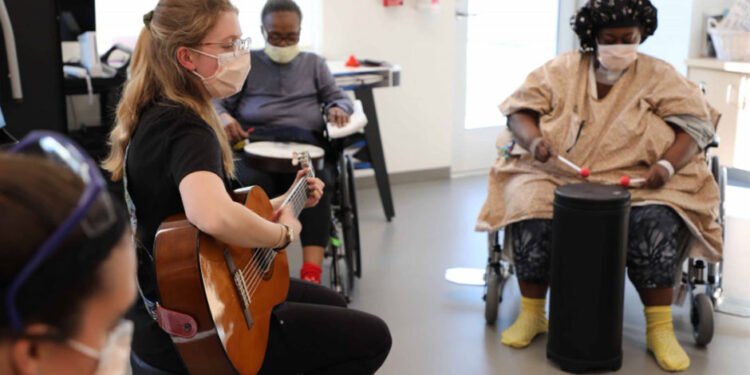Hospice care is about more than managing physical symptoms—it’s about providing emotional, psychological, and spiritual comfort during one of life’s most challenging transitions. Among the many complementary therapies available, music and art therapy have proven to be particularly effective in enhancing quality of life for patients in hospice. These creative outlets allow patients to express emotions, reduce anxiety, and foster meaningful connections with their loved ones and caregivers.
For those seeking compassionate end-of-life care, hospice Virginia offers comprehensive services that may include integrative therapies like music and art to support patient well-being.
What Is Music and Art Therapy?
Music and art therapy are evidence-based practices conducted by trained therapists who use artistic expression to address emotional and psychological needs. These therapies are not simply recreational activities—they are structured interventions tailored to each individual’s preferences, capabilities, and therapeutic goals.
Music Therapy
Music therapy involves the use of musical elements such as rhythm, melody, and lyrics to promote emotional well-being. In hospice care, music therapists may sing with patients, play soothing instruments, help patients create songs, or simply use music for relaxation. Music has the power to evoke memories, improve mood, and create a sense of peace.
Art Therapy
Art therapy provides patients with the tools to create visual art as a way to process complex emotions and communicate what may be difficult to express with words. Painting, drawing, sculpting, or even simple coloring can be therapeutic activities that promote self-expression, reduce stress, and foster a sense of accomplishment.
Benefits of Music and Art Therapy in Hospice
The advantages of integrating music and art therapy into hospice care are both broad and profound. These therapies contribute to overall quality of life and can serve as meaningful forms of connection and communication during a deeply personal time.
Emotional Expression and Processing
Patients facing terminal illness often experience a whirlwind of emotions including fear, sadness, anxiety, and even anger. Music and art provide safe, non-verbal outlets for expressing these feelings. Whether through painting a picture that symbolizes hope or listening to a song that brings comfort, these activities offer patients a way to confront and cope with their emotions.
Pain and Symptom Management
While not a substitute for medical treatment, both music and art therapy can help reduce the perception of pain and discomfort. Studies have shown that calming music can slow heart rate and lower blood pressure, which may lead to physical relaxation and decreased pain perception. Engaging in creative activities can also distract from physical discomfort, offering a mental reprieve from illness.
Enhancing Communication
As verbal communication may become difficult near the end of life, creative therapies serve as alternate methods for patients to connect with loved ones and caregivers. A painting can convey a patient’s final message or legacy, while a shared song can become a treasured memory for family members.
Supporting Spiritual and Existential Well-Being
Hospice care addresses not only physical health but also spiritual and existential concerns. Music and art therapy can help patients explore themes such as meaning, purpose, forgiveness, and legacy. Creating a piece of art or choosing a meaningful song can become a powerful part of a patient’s spiritual journey.
Involving Family Members and Caregivers
Music and art therapy sessions often welcome the participation of family members, creating moments of shared meaning and intimacy. These joint activities can offer comfort and a sense of connection during a time that often feels isolating. Families can collaborate on memory boxes, listen to favorite music together, or create legacy art that becomes a cherished keepsake.
Tailoring Therapy to Individual Needs
One of the strengths of these therapies is their flexibility. Sessions are customized based on each patient’s physical abilities, interests, and emotional needs. A therapist might bring a small instrument to the bedside of a patient with limited mobility, or provide digital tools for creating visual art when traditional materials are impractical.
The Growing Role of Integrative Therapies in Hospice
As hospice programs continue to evolve, integrative therapies like music and art are gaining wider recognition for their value. These therapies emphasize the holistic approach to end-of-life care—honoring the emotional, social, and spiritual dimensions of the human experience. They also align with the goals of hospice to preserve dignity, foster peace, and promote comfort.
Conclusion
Incorporating music and art therapy into hospice care offers a gentle, powerful way to enrich the final phase of life. These therapies support emotional expression, enhance comfort, and provide opportunities for meaningful connections. For those navigating this journey, options like hospice Virginia can provide the holistic support needed to ensure each moment is met with compassion, creativity, and care.












